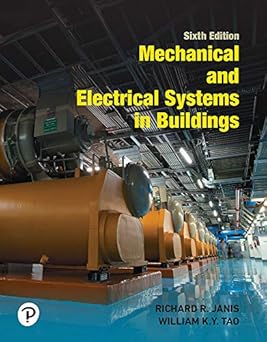(PDF)Mechanical and Electrical Systems in Buildings 6th Edition
by Richard R. Janis, William K. Y. Tao
Key Highlights
- •Comprehensive coverage of Mechanical, Electrical, and Plumbing (MEP) systems in buildings.
- •Updated 6th Edition reflecting current technologies, codes, and sustainability practices.
- •Ideal resource for students and professionals in architecture, engineering, and construction.
Description
FAQ
Is this book suitable for someone completely new to building systems?
While comprehensive, it's primarily designed for students and professionals in related fields. A basic understanding of physics and building concepts would be helpful, but the book does explain principles clearly. It might be challenging for a complete novice, but very rewarding.
Does this 6th edition include updates on green building and sustainability?
Yes, this edition incorporates more current information on energy conservation, sustainable design practices, and technologies relevant to modern green buildings, reflecting the industry's shift.
Is the focus more theoretical or practical?
The book strikes a good balance. It covers the fundamental theories behind how systems work but heavily emphasizes practical application, design considerations, and real-world integration in buildings.
Does the book cover residential building systems as well as commercial ones?
It primarily focuses on systems typical in larger commercial, institutional, and industrial buildings, where MEP systems are more complex. However, many principles discussed are also applicable to residential systems.
Are there calculation examples or design exercises included?
Yes, the book typically includes examples and illustrations to help readers understand calculations and design concepts related to various mechanical and electrical systems.
Is this book useful for preparing for professional engineering exams (like the PE)?
Absolutely. Many engineers use this text as a reference when studying for licensing exams, particularly those sections covering HVAC and electrical systems.
Reader Reviews
About the Author
Richard R. Janis and William K. Y. Tao are highly respected experts in the field of building systems engineering. Their combined experience spans decades of practical design, consultation, and education, making this textbook a definitive guide shaped by real-world knowledge and academic rigor. They have established this work as a foundational text for generations of architects and engineers.
